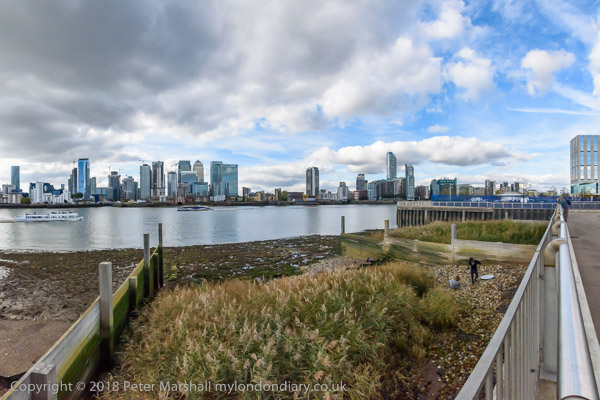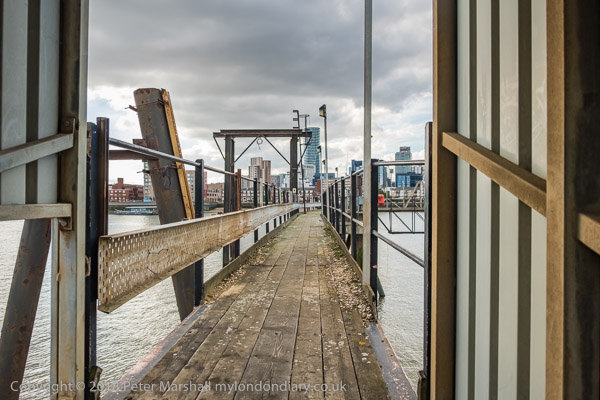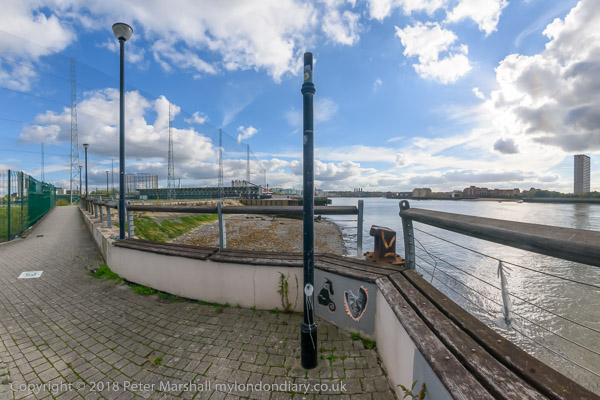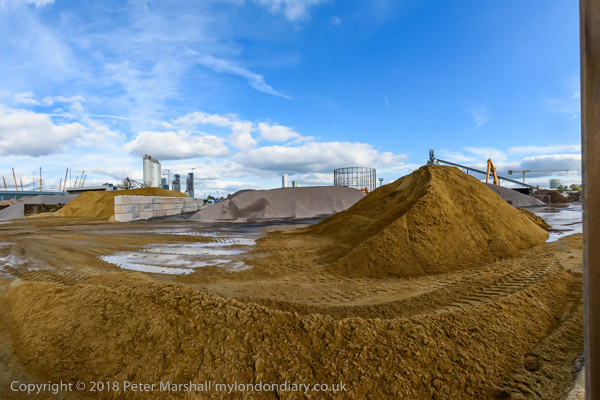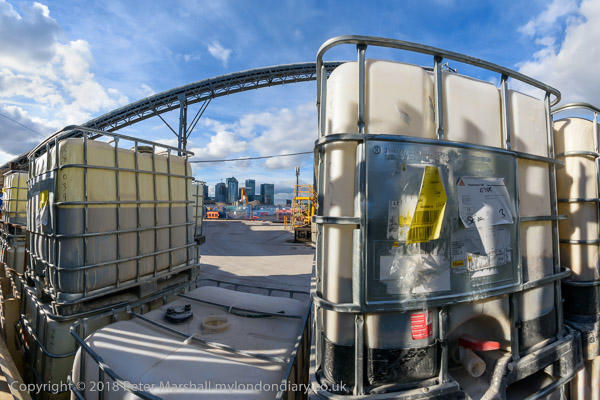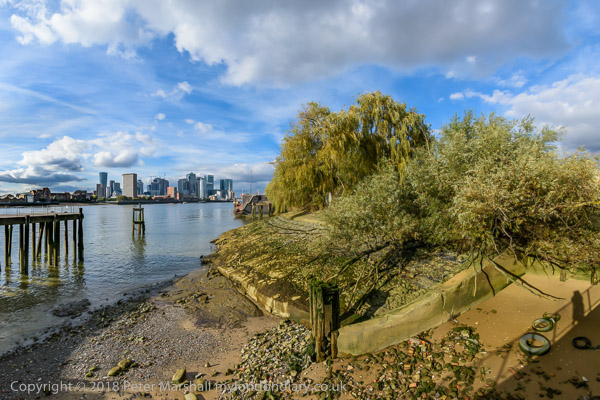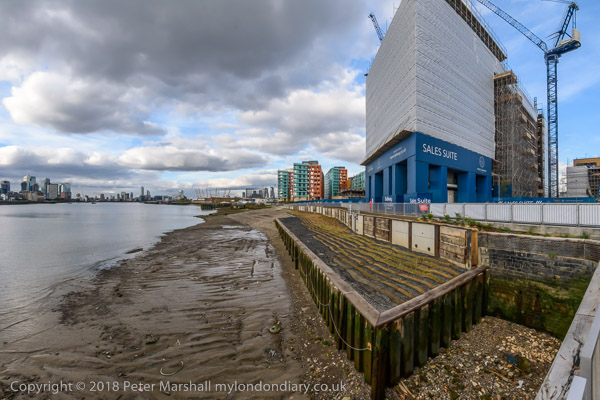This continues my posts on my walk in Walworth on 8th January 1989. The previous post was
Liverpool Grove & Octavia Hill.
The domestic scale of the long terrace built around 1900 contrasts with the huge slab block of Wendover on the Aylesbury Esate, built between 1963 and 1977 to provided good quality social housing. Poor maintenance by the council allowed the estate to deteriorate and it became demonised as a problem estate.
Although a majority of residents wanted to remain and voted for refurbishment, Southwark Council decided to demolish the estate. They were met with considerable local resistance with some blocks being occupied by activists. Although parts of the estate have been demolished the fight to retain the rest continues.
The council’s policy seems driven by the hope of large profits for themselves as well as the developers from replacing much of the estate by properties which can be sold at market prices. Similar hopes led to the demolition of the Heygate estate but this resulted in a massive loss for the council, details of which were accidentally disclosed, although some of those from the council involved in the scheme moved to highly lucrative jobs as a result of it.
Heygate’s demolition also resulted in a huge loss of social housing in the area, and the displacement of former residents to outlying areas of London and beyond. Many of the relatively low quality high price flats on the site were sold overseas as investment properties, their value increasing as London house prices soar.
Wooler Street was on the edge of the Octavia Hill planned estate and contains a number of terraced maisonettes and houses of a more conventional late Victorian/Edwardian design. The Octavia Hill (Liverpool Grove) Conservation Area appraisal suggests they “are most likely part of the same development“. Possibly they come from a development by the Church Commissioners before Hill became involved.
Merrow Street is one of the older streets in the area and this picture shows its junction with Walworth Road. The buildings here are still much the same but their uses have changed. Panache Exclusive Footwear is now a pawnbrokers and The Rock pub which was at 374 Walworth Rd since at least the 1860s became an Irish pub, Liam Og’s around 2005. Liam Og’s apparently featured male strippers at Sunday Lunchtimes, though this perhaps put customers off and in 2009 it became Banana’s Bar which closed a few years later.
There were plans to demolish this building approved in 2018 but then further plans to reopen it as a Beer and Burger Bar with Dance Hall’ in 2020 which failed. In 2021 it became Homeland Furniture.
Fielding Street is on the west side of Walworth Road and according to the Walworth Road Historic Area Assessment was laid out (then as Olney St) “after the sale of Montpelier Tea Gardens and Walworth Gardens, post 1844“. These terraced houses with basements have rather impressive doorways are shown on the earliest large-scale maps of the area I can find surveyed around 1870. The skip shows that extensive work was being undertaken on at least one of them.
There is still a café here, though it had become the Continental Cafe rather than remaining Irish until 2012. It then became the ‘University of Suya’ which I think was a Nigerian restaurant, and later the frontage added the words ‘African Bar & Grill’ to make its offerings clearer.
The doorway at left was the entrance to flats above the shops at 403 Walworth Road.
Horsley Street is a short street running from Arnside Street south to Westmoreland Road.
Harkers Studios was purpose built for Joseph Harker’s theatrical scenery painting business in 1904 and was grade II listed in 1989. The large doors at left have the number 43 and ‘MOSS EMPIRES LTD’, the owners of many UK theatres named on them.
More recently the works became ‘The Furniture Union’ or TFU, an upmarket supplier of furniture, bathroom ware, kitchens, lighting, furnishings and accessories. It has recently been converted into “stunning apartments, which manage to preserve the special architectural and historic interest of the building.“
Wellington House is part of a small estate with four blocks including the rather similar Arnside House now managed by the Keniston Housing Association, “providing low cost rented accommodation to people who find it difficult to compete in the private rented sector. We charge rents at below market rates. Most people who live in our properties have been referred to us through choice based lettings schemes run by local councils.”
Until 1937 this street was called Beresford Street and like many other streets was renamed when the LCC finally decided to rid London of duplicated street names. They had begun the job when they were formed in 1889, but only really got down to it seriously in the mid 1930s. The name John Ruskin Street was chosen to remember the prominent Victorian writer, philosopher and art critic who died in 1900.
Ruskin grew up in nearby Herne Hill and was mainly educated at home (as were many children of wealthy families.) But at the age of 15 he spent a year attending the school in Camberwell run by Thomas Dale, who earlier had been the first professor of English at any English university. But Dale left London University after only a couple of years, finding it too “godless” and set up his own school.
Probably what most people now remember about Ruskin was his failure to consummate his marriage with Effie Gray, allegedly because of his discovery on his wedding night that unlike the classical statues with which he was familiar, real women had pubic hair. Their marriage was eventually annulled 6 years later. Perhaps the name of the Venus Fish Bar had some connection with this story.
BRAC is something of a mystery, but I think it may simply be from bric-à-brac as I think this was a business selling secondhand furniture and small objects such as we might now find at car boot sales. But there could be a quite different explanation, and suggestions for what BRAC here could stand for as an acronym are welcome. The BRAC building has been demolished and replaced by a block of flats but the building on the left remains, now residential.
West End Hair Styling at 13 John Ruskin St where pensioners could get a trim for £1.50 is now I think a travel agent, having been for some years a bar and restaurant.
The first post on this walk on January 8th 1989 was Elephant, Faraday, Spurgeon & Walworth Road.








